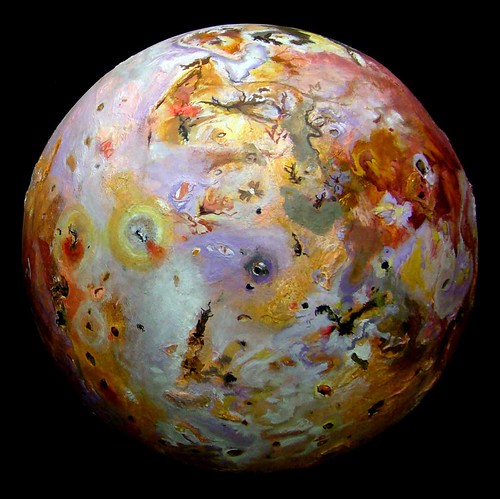

Its average orbital distance is about 262,000 miles (422,000 km). Distance from Jupiter: Io is the fifth moon from Jupiter. A popular theory is that a Mars-sized rock, named Theia, crashed into Earth around 4.5 billion years ago. Io fast facts Age: Io is about 4.5 billion years old, about the same age as Jupiter.

9) Like Earth, the Moon has gravity (the force that pulls things towards the ground).
#Fun facts about io moon full#
Packed full of fun features, jaw-dropping facts and awe-inspiring photos itll keep you entertained. 8) The temperature on the Moon varies from super hot to super cold! When the Sun hits its surface, temperatures can reach a scorching 127☌. But when the Sun ‘goes down’, temperatures can plummet to around -153☌. How and when do scientists think the moon formed.This means we only ever see around 60% of the Moon’s surface from Earth! The part that faces Earth is known as the ‘near side’ and the other, the ‘far side’. It takes roughly the same amount of time for the Moon to make a full rotation as it does for it to complete its orbit. 7) As the Moon travels, it rotates on its own axis, just like our planet.Find out more in our fascinating phases of the Moon feature! 6) Ever noticed how the Moon appears to change shape each night? That’s because as the Moon orbits the Earth, the Sun lights up different parts of its surface – so it’s just our view of the Moon that’s changing, not the Moon itself.We see the Moon because it reflects light from the Sun.

The Asteroid Belt is often referred to as the Main Belt to distinguish it from other groups of asteroids such as the Lagrangians and Centaurs. Gravitational influences can move asteroids out of the Belt. 5) Although the Moon shines bright in the night sky, it doesn’t produce its own light. This caused them to collide and break into smaller pieces.4) It takes 27.3 days for the Moon to travel all the way around the Earth and complete its orbit.Its orbit around our planet is shaped like a slightly squashed circle known as an ellipse. 3) The Moon is Earth’s only natural satellite – a celestial body that orbits a planet.Packed full of fun features, jaw-dropping facts and awe-inspiring photos – it’ll keep you entertained for hours!įind our magazine in all good newsagents, or become a subscriber and have it delivered to your door! Ask your parents to check out the ‘Subscribe’ tab on our website! (AD) National Geographic Kids is an exciting monthly read for planet-passionate boys and girls, aged 6-13!


 0 kommentar(er)
0 kommentar(er)
